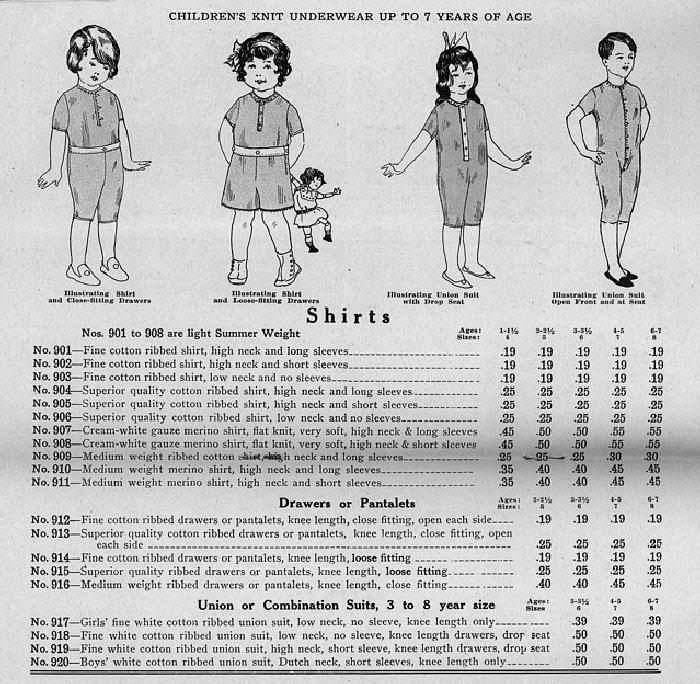
Figure 1.--Stuarts offered knit underwear in a variety of styles for children under 7 years of age. There were shirts, drawers, and combination or "union" suits with the shirts and pants combined in many different styles. |

|
Dressing in the early 20th century was more complicated than is the case today. This was especially true for youngr children who have a little trouble dressing themselves without mother's assistance. Nothing shows this more than the underwear that was worn. Quite a range of underwear styles were available for children in 1915. There were shirts, drawers, and combination or "union" suits with the shirts and pants combined. There were also waist suits designed to hold up long stockings and other articles of clothing.
Stuarts offered knit underwear in a variety of styles for children under 7 years of age. There were shirts, drawers, and combination or "union" suits with the shirts and pants combined in many different styles. They were made mostly knee-length, coming just below the knee. One style was illustrated with above the knee length.
We notice a page in the Wards Fall and Winter catalog for men's and children's (boys and girls) underwear. There was quite a number of different variations offered. There wwre both shirts and drawers and union suits. The girls shirts were called vests, but the pants for boys and girls were called drawers. One interesting aspect of this ad is that the girls underwear was included in the section for men and boys rarther than the women's section.
Stuarts offered childrens waists in different styles for boys and girls. Bloomers were available for little girls.
The Ward's Spring and Summer catalog for 1915 (p, 207) offered waists for both boys and girls. There were both skeleton-syle garter waists as well as underwaists. Many children in 1915 wore long stockings all year round. Formality rather than seasonality seems to have been the issue here. Five different models of waists with hose supporters attached are advertised on this page. Three of these are for "boys and girls", one is for "children" (presumably of either gender), and one is designated a "Lace Trimmed Underwaist" (presumably intended principally for girls).
Here is an interesting advertisement (on a post card) for "E-Z
Waists" for boys. I'm a little unsure how postcards were used in advertising. Perhaps they were sent to retail stores. Here we are just not sure. "E-Z was a brand name" and we already have a later ad from the same company in the series you loaded a few months ago from Parents Magazine. This one is quite a bit earlier. On the back of the postcard is the slogan, "The E-Z Waist makes the child comfortable and happy."
Notice the waist suit or underwear offered here by Stuarts for younger boys at the bottom right hand corner. They were pattened as "Allheneeds" meaning the only underwear or stocking supporter that he needed. They could be worn with these tunic suits. Note the boy is holding one of the straps that could be used to hold up long stockings.
This ad from the Sears Spring and Summer catalog of 1915 (p. 311) provides useful information on the features of boys' waists and waist suits during the 1910s. Almost all children, both boys and girls, during this decade wore union suits as their basic underwear style both summer and winter. The winter
union suits usually had long sleeves and long legs whereas the summer union suits tended to have short sleeves or be sleeveless and have knee-length legs. And most children--at least to the age of 12 and often beyond--wore long stockings with knee pants, above-the-knee knickers, or dresses even during the hot weather. They therefore needed to wear underwaists in addition to the union suits for the purpose of anchoring hose supporters and for buttoning on trousers, skirts, bloomers, etc.
This illustration for Sears underwaists and waist union suits (1915) actually shows a boy's trousers buttoned onto the waist buttons of his union suit, so the same procedure would apply to underwaists
that had the same kind of waist buttons. Obviously boys who buttoned their trousers to underwaists couldn't wear tuck-in shirts. Maybe it would be a good idea to link this image to our discussion of the
function of waist buttons.
Navigate the Boys' Historical Clothing catalog/magazine pages:
[Return to the Main Ameruican 1915 catalog page]
[Return to the Main American mail order 1910s page]
[Main photo/publishing page]
[Store catalogs]
[Fashion magazines]
Navigate the Boys' Historical Clothing Web Site:
[Introduction]
[Activities]
[Biographies]
[Chronology]
[Cloth and textiles]
[Clothing styles]
[Countries]
[Topics]
[Bibliographies]
[Contributions]
[FAQs]
[Glossaries]
[Images]
[Links]
[Registration]
[Tools]
[Boys' Clothing Home]
Navigate the Boys' Historical Clothing Web Site:
[Sailor suits]
[Sailor hats]
[Buster Brown suits]
[Eton suits]
[Rompers]
[Tunics]
[Smocks]
[Pinafores]
[Long stockings]
[Underwear]
